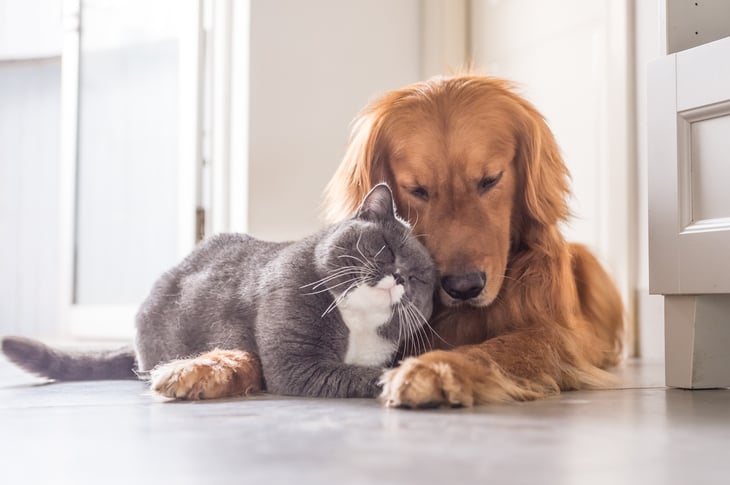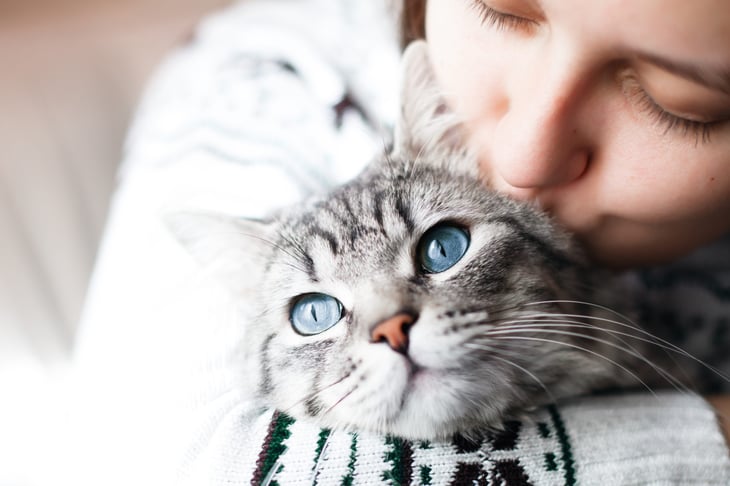
Editor's Note: This story originally appeared on Point2.
Pet ownership has increased drastically in the last couple of years, with more of us than ever before sharing our homes with various furry companions.
However, when it comes to renting with pets, there are some definite dos and don’ts to be aware of. So let’s take a look.
Do: Know Your Rights

Legislation on renting with pets varies across states and provinces, so this is the best place to start documenting yourself. For example, in Canada, the Ontario Residential Tenancies Act prevents landlords from including a no-pets provision in the lease agreement.
Landlords can, however, refuse tenants who have pets. In other Canadian provinces, as well as in the U.S., such decisions are left to the landlord’s discretion. The only exceptions are service dogs and emotional support animals, which can bypass no-pets rules given the fact that they are not actual pets.
In addition to no-pets clauses, you should also know your rights regarding pet rent and deposits. For example, pet rent is prohibited in Canada, but other pet fees are allowed. In the U.S., pet rent, deposits and fees are regulated by local laws, so make sure to check those in advance.
Also, keep in mind that a landlord can never charge you any pet rent or deposit if you have a service animal or emotional support animal.
Don’t: Hide Your Pet From Your Landlord

As tempting as it is, sneaking pets into a rental is never a good idea.
If your lease has a strict no-pets clause, even something as seemingly inoffensive as a hamster can be considered a breach of contract.
A good relationship with your landlord goes a long way, so it’s essential to start off on the right foot. And, who knows, if you need to relocate, they may even agree to write a letter of recommendation for your pet.
Do: Prepare Your Pet’s Documents

Even if your landlord doesn’t ask for it, it’s a good idea to have your pet’s paperwork ready before signing the lease.
Most states and provinces will require a pet license, which allows shelters and animal control officers to identify the pet if it gets lost or stolen. A pet license will also prove that your cat or dog is up to date with its rabies and distemper vaccinations, whether it’s been spayed or neutered, and whether the pet has a microchip.
In some cases, you will also need to provide a certificate of veterinary inspection, an official document attesting that your pet has been inspected for diseases and is in good health.
Do: Mind Your Neighbors

This applies to both neighbors as well as potential roommates. Nobody likes a dog that barks at odd hours night and day, and if you’ve only just moved in, this could cause problems later on.
If neighbors complain about noise or other pet-related disturbances or damage, your landlord may present you with an eviction notice. To avoid that, try to talk to your neighbors and address any concerns as soon as they arise.
Don’t: Leave Your Pet Alone for Long Periods

Unless you’re working from home, there’s a good chance your pet will spend many hours each day alone. And sadly, a lonely pet is a stressed pet and is more likely to cause damage to the property as a result.
Ideally, once you move into a new rental, try to spend a few days with your pet until it becomes familiar with their new home.
Also, try to establish a daily routine, so your pet knows that it’s normal for you to be gone for a few hours. Go for long walks, spend as much time as you can playing with your pet, and make sure that it has plenty of food and water while you’re away.
Do: Consider Pet-proofing

Pet proofing is the easiest way to reduce pet-related damage and ensure you’ll get your deposit back. Limiting your pet’s access to some rooms can help reduce damage to floors, walls and furniture.
Removing carpets can help you stay on top of cleaning up pet hair. You can also put delicate items and appliances in closed cabinets, where pets can’t accidentally break them.
Similarly, toys are a great way of distracting pets from chewing or scratching the furniture in your rental.
Don’t: Ignore Cleanliness

Not all pet-related damage is the result of chewing or scratching. Sometimes, it can result from falling behind on tidying up after your pet.
For example, urine stains or smells can be difficult to remove if they are unattended for too long. Also, pet hair can become an absolute nightmare once it starts building up on carpets and upholstery.
But if you stay on top of regularly cleaning up after your pet, you will drastically reduce the risk of potential pet damage.





Add a Comment
Our Policy: We welcome relevant and respectful comments in order to foster healthy and informative discussions. All other comments may be removed. Comments with links are automatically held for moderation.